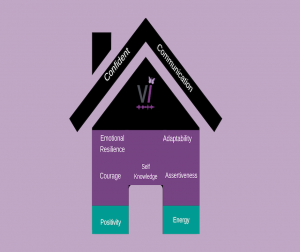No Need to Shout to be Heard
How many times have you been to a talk or performance where everything is just too loud? Even with well balanced sound systems some people “shout” down the mic. At best it is boring, at worst it just doesn’t communicate. It is “heard” but not truly heard!

Communication
Communication is the point of speaking or singing. We need to be truly heard to connect with our audience. It is not all about volume. Now I know that with some situations loudness is the order of the day. For example, an actor taking on a role requiring shouting or a rock singer using extreme voicing. In these cases the connection is more visceral. Therefore correct technique is vital, to avoid vocal strain or damage.
Part of this technique is learning how to manage the range of emotion and intensity (loudness) in the sound so that it is not “full on” all of the time. In fact, this is important for all voice users, to avoid injury and to add interest. So how can we do it?
Highs and Lows
A successful performance or talk will usually have “highs and lows”, just like communication in everyday life. So, it can be useful to work out where these energetic peaks and troughs will come in your presentation. Then you can work towards delivering them. Of course, to make an impact with a “high”, you also have to include some “lows” to make a contrast. We can think of this as vocal “landscaping”.

Your Energy
Did you know that different people have different emotional and vocal energies? Knowing if you are a high or a low energy person can be important. e.g. If you are softly spoken, not demonstrative and calm, your “highs” are likely to be lower than those of a naturally high energy, bouncy, exuberant person. This is fine; it is just important to know where your own boundaries are.
Sometimes you may need to adjust where these high or low points are so that you don’t under or over perform. You can certainly do this with technique and practice.
Be Truly Heard
This means that people won’t just hear your voice, they’ll hear you and your message.
Tips:
- Get to know the dynamic range of your voice. Take some vocal training if necessary.
- Mark the highs and lows (landscape) on your speech or song. Use them for practice. Match them to your own energy.
- Explore variations between the highs and lows so that you add even more interest.
- Explore different versions, recording yourself and listening to see which is most effective.
- Ask a colleague or friend to listen to your presentation and feed back honestly.
Do get in touch if you would like to explore any of the ideas mentioned above.




